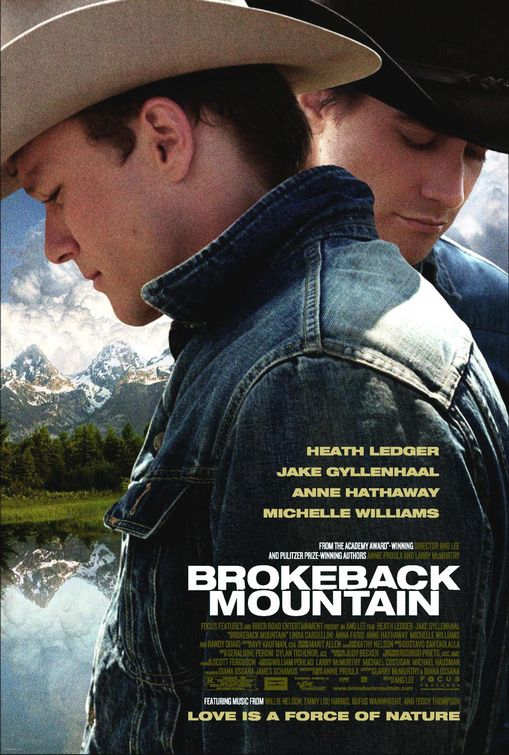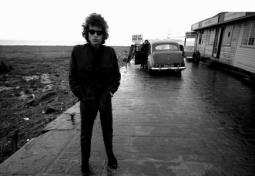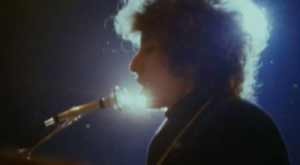Film
This is a moving documentary on
the hubris of a
single man.
Many saw this is some sort of allegory about humanity's relationship
with
nature, but it is not a story as big as that. But seeing it as one
man's
relationship (and obsession) with what he thought was "natural" doesn't
make it
any less compelling. This
guy, Timothy
Treadwell, spent thirteen summers in
Alaska living among many different animals, mostly dangerous
grizzly bears,
i.e., animals from which most people would keep away by at least a
hundred
feet. The footage is beautifully shot and reconstructed by
Werner
Herzog whose narration provides a soothing counterpoint to the
pregnant
expectation of violent confrontation on the screen. Herzog gathered all
the
film from Treadwell's dozen summers in Alaska to produce this
documentary, one
of the best I have seen in many years. I don't give anything away by
writing
that ultimately, a bear kills Treadwell and his girlfriend (in Katmai
National Park) and then
proceeds to
eat them. Hunger trumped kindness. If there is a story bigger than the
one
about a half-man/half-child who was looking for something that he
should have
been aware that he would never find, it's perhaps that Treadwell
represents a
certain kind of culmination: an extreme example of the modern American
obsession with the
sanctity
of non-human nature, that we as humans are separate from nature, that
we as
humans are not animals, and it is only
nature and animals that deserve
our
kindness, love, and pity. Perhaps I'm wrong but that's how it felt.
There are two books on Treadwell that may be worth searching out: The Grizzly Maze: Timothy Treadwell's
Fatal Obsession with Alaskan Bears (2005) by Nick Jans and Death
in the Grizzly Maze: The Timothy
Treadwell Story (2005) by Mike Lapinski and from what I can
tell
the former is the better one and fills in parts of the story that were
only hinted at in the film documentary.
I liked this movie. It tapped
into the archetype
of
things-we-loved-that-we-had-to-give-up-because-we-had-to-make-some-compromises
storyline. It's beautifully acted and shot. There is a
moment
when the wife of
the main character, played by Michelle
Williams, discovers accidentally
that her
husband has a male lover. You see an amazing spectrum of emotions pass
on her
face, as we see a person who faces something that had been completely
outside
of her worldview, and the then view the cascade of realizations that
must come with
such a
discovery, as new meanings get attached to events in an entire life,
all of it on a single continuous shot of her face.
There are
many moments like that in the movie. However, almost all the reviews
that I've
read seemed to me to bend over backwards to avoid making the point that
this is
a movie about gay love (in favor of the watered-down, "this is a great
American
love story!"). No, this is quintessentially a story about gay people
in love,
not a love story about people
who happen to be gay. For a much more
eloquent
meditation on this position, read the piece entitled "An Affair to Remember"
in the The New York Review of
Books (February 23, 2006).
There is a
moment
when the wife of
the main character, played by Michelle
Williams, discovers accidentally
that her
husband has a male lover. You see an amazing spectrum of emotions pass
on her
face, as we see a person who faces something that had been completely
outside
of her worldview, and the then view the cascade of realizations that
must come with
such a
discovery, as new meanings get attached to events in an entire life,
all of it on a single continuous shot of her face.
There are
many moments like that in the movie. However, almost all the reviews
that I've
read seemed to me to bend over backwards to avoid making the point that
this is
a movie about gay love (in favor of the watered-down, "this is a great
American
love story!"). No, this is quintessentially a story about gay people
in love,
not a love story about people
who happen to be gay. For a much more
eloquent
meditation on this position, read the piece entitled "An Affair to Remember"
in the The New York Review of
Books (February 23, 2006).
It's hard to write about Bob Dylan these days without having to wade through the enormous weight of him as (both a pop and haute) cultural icon, as an "American Master." It's almost impossible to evaluate anything about Dylan without getting caught up in the bigger and more troubling issues of how contemporary cultural commentators repeat certain markers of history over and over again because they know not how to say anything new about Dylan (or really anyone of his generation). And the history of Dylan has been told so many times by so many people that even a superficial observer can recount the usual litany of events: the folk music thing, "Blowin' in the Wind," Don't Look Back, the Newport Jazz Festival where he plugs in, the "Royal Albert Hall" concert where an audience member calls him Judas for betraying their cause, the motorcycle accident, blah blah, over and over and over. Dylan's history is calcified. It was calcified already by a generation of baby boomers in control of shitty magazines like Rolling Stone and Spin but now he has entered the hallowed heights of middle-class-wanna-be-elite Western culture: the Lincoln Center, the Nobel Prize, PBS, NPR, Starbucks, etc. etc.
So...having said all that, the identifying concept behind this is totally repugnant and ridiculous. Let me say right off the bat that I despise Martin Scorcese, not so much because he makes only mediocre movies (which he does) but because he represents the elevation of baby boomer self-absorption, the ethic of we-did-better-than-anyone-before-or-after-us, to its repugnant pinnacle. It's people like Scorcese (and Oliver Stone and Bruce Springsteen and the Rock'n'Roll Hall of Fame and blah blah blah) who continue to cram the 1960s down people's throats. I know, I know, you thought that battle was over, but how to take the fact that the 1960s is now PBS fare? That as the baby boomers graduate to being the custodians of high culture, they are now establishing a lineage and canon of greatness that owes everything to the 1960s and nothing to what came after? Fuck the 1960s, I say. Anyway, what does any of this have to do with Dylan? Well, apparently Scorcese directed this here documentary about Dylan. It's hard for me to tell what exactly Scorcese did, since this is pretty much the standard format of a PBS-related documentary: (a) interview with the main actors of the drama in comfortable couches, (2) the closeup of the still black-and-white photograph with the voiceover and (3) the archival footage. What makes all of this work is that this is Bob Dylan when he was indeed white hot, focusing mostly on his artistic life from 1961 to 1966.
 The documentary is basically structured
around live and
backstage footage of his 1966 tour (which originally provided the
footage for the incredibly incoherent and insane TV documentary Eat
the Document). For many Dylan
fans (including myself), the 1966 tour is the motherlode of the Bob
Dylan catalog: it is the moment of his pinnacle after three superb
albums (Bringing
it All Back Home,
Highway
61
Revisited, and Blonde
on Blonde) when his art was
moving at light speed in comparison to his peers. Most laypeople would
probably identify Bob as a folk singer, which he sort of was in the
early 1960s, but what he was doing in 1965-66 bears little resemblance
to classic folk. It was almost as if he was presaging a kind of punk
sensibility filtered through equal amounts junk culture, beat jargon,
and established literary allusions. It was basically a big FUCK YOU to
his old fans. And this is partly what draws me to Dylan. He was
incredibly talented, self-absorbed, and an artist completely unafraid
of being hated by the people he was playing to. How many pop/rock stars
would today have such an adversarial stance with fans and the press?
This is all chronicled here, the footage from the 1966 tour providing a
fantastic (and previously unseen) view into the mad world of Bob Dylan
circa 1966. He was clearly doing a lot of drugs (certainly
amphetamines, some say heroin) and it begins to show by the end of the
documentary when Dylan's eyes are holes in his face.
The documentary is basically structured
around live and
backstage footage of his 1966 tour (which originally provided the
footage for the incredibly incoherent and insane TV documentary Eat
the Document). For many Dylan
fans (including myself), the 1966 tour is the motherlode of the Bob
Dylan catalog: it is the moment of his pinnacle after three superb
albums (Bringing
it All Back Home,
Highway
61
Revisited, and Blonde
on Blonde) when his art was
moving at light speed in comparison to his peers. Most laypeople would
probably identify Bob as a folk singer, which he sort of was in the
early 1960s, but what he was doing in 1965-66 bears little resemblance
to classic folk. It was almost as if he was presaging a kind of punk
sensibility filtered through equal amounts junk culture, beat jargon,
and established literary allusions. It was basically a big FUCK YOU to
his old fans. And this is partly what draws me to Dylan. He was
incredibly talented, self-absorbed, and an artist completely unafraid
of being hated by the people he was playing to. How many pop/rock stars
would today have such an adversarial stance with fans and the press?
This is all chronicled here, the footage from the 1966 tour providing a
fantastic (and previously unseen) view into the mad world of Bob Dylan
circa 1966. He was clearly doing a lot of drugs (certainly
amphetamines, some say heroin) and it begins to show by the end of the
documentary when Dylan's eyes are holes in his face.Some of the live footage is almost halucinatory. When singing "The Ballad of a Thin Man" in concert, Dylan sits at a piano and plays with his right hand, while his left is raised above like a claw, the knuckles of his hand trying to portray the force and bile of his lyrics. It's almost uncomfortable to see him spit out the words as his left hand tries to clutch at the air, the bony fingers strangling the object of his venom. Dylan would of course make great albums after this (Blood on the Tracks obviously, even Desire) but he was never in direct confrontation with the exact thing that made him famous. Today Dylan remains out of synch with just about any normal standard of pop stardom; the word that rock critics like to use is "inscrutable." This is a different kind of Dylan, one who lives outside of time and space. Here in 1966, Dylan--egotistical, immature, sometimes an asshole, but always brilliant--stares directly into the notion of stardom and pop culture and says "it doesn't make sense to me."
 The most oft-described
confrontation,
heard but never seen before, is shown here. It's a fantastic few
seconds. During the 1966 tour, Dylan repeatedly faced hostile crowds
who booed him for betraying his "true" folk roots. At one stop in
Manchester, an audience member shouts out "Judas!" to which Dylan
responds, "You're a liar!" and then "I don't believe you!" and then
finally, he turns his back to the audience and advises his backing band
to "PLAY FUCKING LOUD!"
and they launch into "Like a Rolling Stone."
Although now a cliche of rock history, this moment still
sends shivers down my spine. It's an uncomfortable moment of
artistic hubris that works.
The most oft-described
confrontation,
heard but never seen before, is shown here. It's a fantastic few
seconds. During the 1966 tour, Dylan repeatedly faced hostile crowds
who booed him for betraying his "true" folk roots. At one stop in
Manchester, an audience member shouts out "Judas!" to which Dylan
responds, "You're a liar!" and then "I don't believe you!" and then
finally, he turns his back to the audience and advises his backing band
to "PLAY FUCKING LOUD!"
and they launch into "Like a Rolling Stone."
Although now a cliche of rock history, this moment still
sends shivers down my spine. It's an uncomfortable moment of
artistic hubris that works.
The Shining /
Shining
Oh, how the same
pieces can be put together to make
something
completely different. Watch Stanley Kubrick's The Shining become Shining. [note, big file]